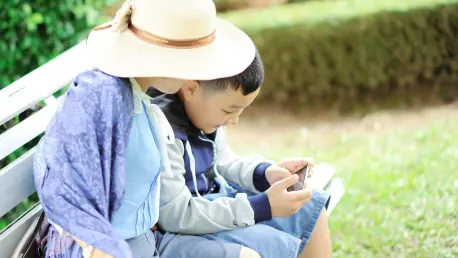In an era where technology permeates every aspect of our lives, the melding of gaming and education has proven to be a powerful tool for knowledge dissemination. The latest example of this symbiosis is the “Siargao Flora and Fauna Puzzle,” a mobile game inspired by the popular Candy Crush format. Developed under the guidance of Prof. Cecilia Moran from the UST College of Science and supported by the DOST-NRCP, this game stands out not only for its engaging interface but also for its noble cause. Its primary mission is to make scientific research on the mangrove biodiversity of Siargao both accessible and enjoyable for the general public. Available on both the Google Play Store and Apple App Store, the game spans over 200 levels, each offering rich educational content on Siargao’s natural treasures.
The Concept Behind the Game
Educational Objectives and Gameplay Mechanics
The “Siargao Flora and Fauna Puzzle” game combines entertainment with education, aiming to translate complex biological research into a format that is easily understandable and engaging. By gamifying the learning process, the developers hope to educate players on the importance of biodiversity conservation in an entertaining way. The game presents accurate information from research as trivia rewards upon the successful completion of each level, meaning that players not only advance in the game but also gain valuable insights into Siargao’s diverse ecosystems. A journal feature within the game allows players to revisit the educational content, enhancing retention and understanding of the material.
Players are introduced to various species inhabiting the Del Carmen mangrove forest, such as the Mindanao Tree Squirrel, Paka Gadikit, and Platymantis Paka. The gameplay itself is designed to be intuitive and fun, using match-three mechanics familiar to anyone who has played Candy Crush. However, the major difference lies in the educational content seamlessly integrated into the gameplay. Each level not only presents a challenge but also serves as an educational module, gradually building up the player’s knowledge about the region’s flora and fauna. This integration ensures that learning is continuous and subconscious, making the educational aspect of the game non-intrusive and therefore more effective.
Magnifying the Importance of Biodiversity
The Del Carmen mangrove forest in Siargao is home to over 100 plant species and 400 animal species, representing a rich biodiversity that is crucial to the ecological balance of the region. The research behind this game aimed to support the designation of Del Carmen as a Ramsar site—a wetland of international importance. This effort bore fruit in November 2021 when the area was officially recognized as the 10th Ramsar site in the Philippines, joining prestigious locations like the Tubbataha Reefs and Puerto Princesa Subterranean River National Park. Through this game, players not only learn about this significant milestone but also understand the ecological importance that such recognition entails.
The game’s interactive format makes it easier for players to appreciate the complexity and beauty of Siargao’s ecosystems. By presenting scientific research in a digestible format, the game fosters a deeper understanding and appreciation for the island’s natural habitat. This educational endeavor goes beyond conventional methods by engaging users in a way that is both informative and entertaining. The trivia and journal features ensure that players are constantly learning, reinforcing the idea that conservation efforts are not only the responsibility of scientists but also of the general public. By making this knowledge widespread, the game aims to inspire a new generation of conservationists who are informed, aware, and passionate about biodiversity.
Collaborative Efforts and Community Involvement
Multi-Stakeholder Collaboration
The creation of the “Siargao Flora and Fauna Puzzle” was a collaborative effort involving various stakeholders, including NGOs, government agencies, the Philippine National Museum, and academic institutions like the University of the Philippines. Prof. Cecilia Moran stressed the importance of making scientific research accessible through diverse channels to engage different segments of society, including local communities. By working together, these organizations pooled their expertise, resources, and unique perspectives to create a game that is both educational and entertaining.
The game is more than just a product of academic research; it is a result of concerted efforts from multiple sectors aiming to foster a greater appreciation of Siargao’s biodiversity. The collaboration ensured that the content was both scientifically accurate and engaging for a broad audience. Contributions from NGOs and government bodies provided valuable insights into the practical aspects of biodiversity conservation, while partnerships with academic institutions ensured the educational content was both rigorous and accessible. This multi-faceted approach underscored the importance of collaborative efforts in addressing complex environmental challenges.
Engaging Local Communities
Local communities play a crucial role in the success of biodiversity conservation efforts. The game was designed not only to educate the broader public but also to engage local people who live in and around Siargao’s ecosystems. By making scientific research accessible via a mobile game, the developers hope to empower local communities with knowledge and foster a sense of stewardship for their natural environment. The game serves as a tool for community education, raising awareness about the importance of conserving biodiversity and the roles individuals and communities can play in this endeavor.
Educational initiatives like the “Siargao Flora and Fauna Puzzle” encourage local participation in conservation efforts, making the task a community-oriented endeavor. By involving local communities, the game not only spreads knowledge but also cultivates a culture of conservation. This local engagement is crucial for the long-term success of any biodiversity project. Empowering residents with information and involving them in conservation efforts fosters a sense of ownership and responsibility, ensuring that the efforts to protect Siargao’s unique ecosystems are sustainable and effective.
Concluding Reflections
Bridging the Gap Between Science and Public Understanding
The “Siargao Flora and Fauna Puzzle” stands as an innovative educational tool that successfully bridges the gap between scientific research and public understanding. By transforming complex scientific data into an interactive and engaging format, the game makes biodiversity education accessible to a broader audience. The success of this project lies in its ability to present scientific research in a manner that is both appealing and comprehensible, thus fostering a greater appreciation for Siargao’s rich biodiversity.
This game exemplifies how technology can be harnessed to promote environmental education and awareness. By integrating modern gaming mechanics with educational content, the developers have created a platform that not only entertains but also educates. This dual approach ensures that players are engaged and informed, making the education process enjoyable and effective. The innovative use of gaming as an educational tool highlights the potential for similar initiatives in other fields, demonstrating that learning can indeed be fun and interactive.
Future Prospects and Impact
The “Siargao Flora and Fauna Puzzle” game merges entertainment with education by transforming complex biological research into an engaging format. By turning learning into a game, developers aim to teach players about biodiversity conservation in an enjoyable way. Accurate research information is presented as trivia rewards once a level is completed, so players progress in the game while gaining valuable insights into Siargao’s different ecosystems. A journal feature lets players revisit educational content, reinforcing retention and understanding.
The game introduces players to species in the Del Carmen mangrove forest, like the Mindanao Tree Squirrel, Paka Gadikit, and Platymantis Paka. It employs intuitive match-three mechanics similar to Candy Crush, making the gameplay both fun and familiar. The key difference is the educational content integrated into each level. Every level is a challenge that doubles as an educational module, building the player’s knowledge about regional flora and fauna. This seamless integration ensures continuous and subconscious learning, making educational content non-intrusive and highly effective.









